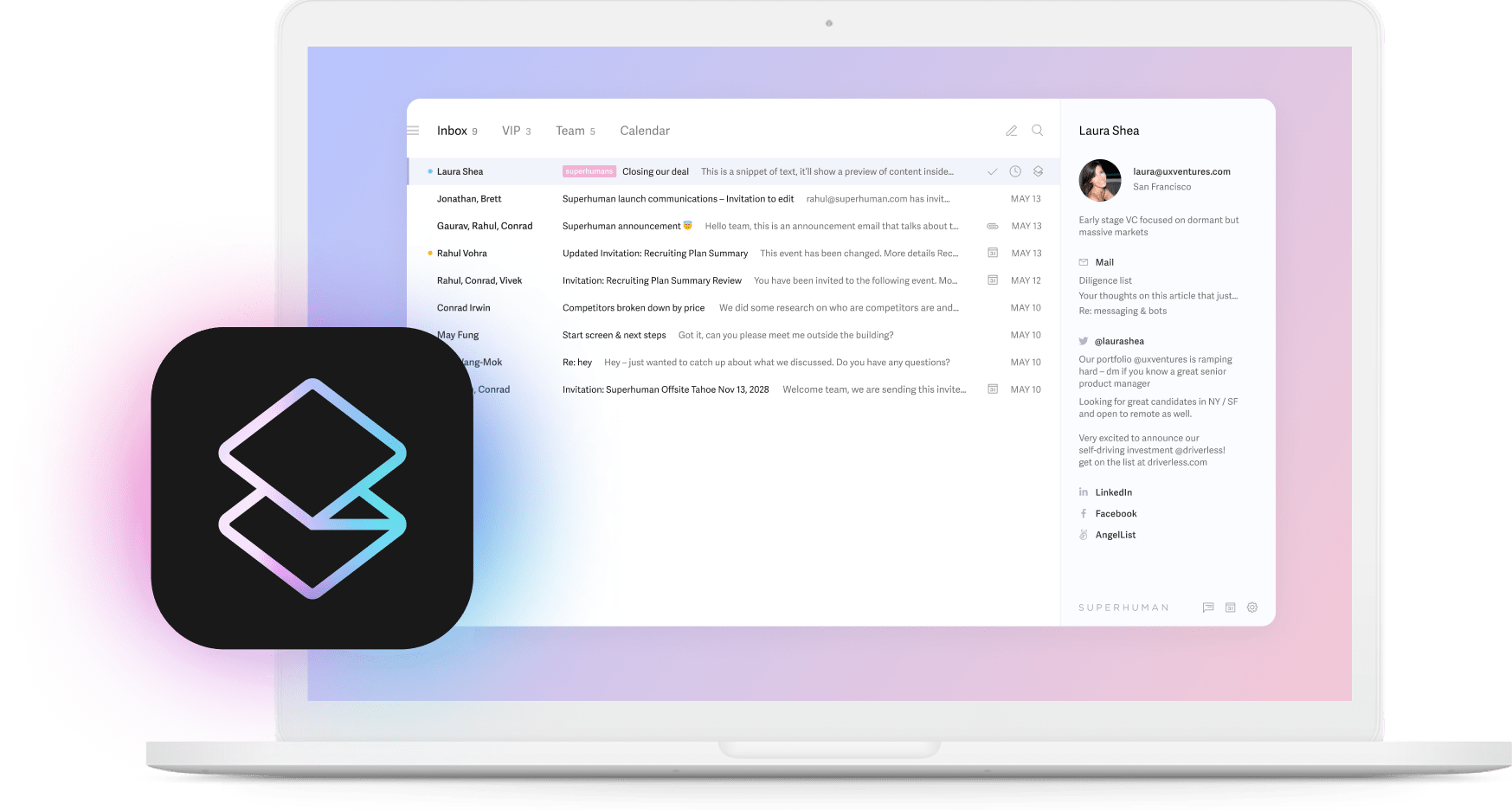
Maya stared at her inbox: 347 unread messages. The clock showed 4:30 PM, and she hadn't even started on the quarterly report due tomorrow. Sighing, she opened yet another customer inquiry requiring a thoughtful response. Then her colleague sent a chat message: "Try that new AI email writer we discussed." Skeptical but desperate, Maya typed a brief description of what she wanted to say. Within seconds, a perfectly crafted email appeared — professional, personalized, and ready to send after a quick review. By 5:15 PM, her inbox count was down to 28, and she was working on that report.
This scenario plays out in offices everywhere as professionals discover how email management software can transform their workday. The numbers are striking: people spend about 28% of their workweek managing emails — that's 582 hours annually just staring at inboxes.
The adoption of these intelligent tools is accelerating rapidly, and the reason is simple: the benefits compound quickly through saved time, better response rates, and more consistent communication.
Let's explore how these AI email writers work, what they deliver, and how to integrate them seamlessly into existing workflows.
Understanding email AI writers
What is an email AI writer?
An email AI writer functions like a smart creative partner for your inbox. Using natural language processing and machine learning, these systems craft personalized messages that sound like you wrote them — because in a way, you did.
Think of it as having a writing buddy who knows exactly how you communicate. You toss out a quick idea of what you need to say, and within seconds, you have a well-structured draft ready to go. This goes beyond basic templates or auto-complete — it adapts to each unique situation.
These tools help you write faster and better. They learn your style over time, understand the context of conversations, and apply email best practices automatically. The result? Less time staring at a blank compose window.
The best email AI writers offer prompt-based content creation, let you adjust the style and tone, understand previous message context, work in multiple languages, and integrate with your favorite email platforms.
With AI assistance, both your speed and effectiveness improve. Whether you're answering customer questions, updating your team, or reaching out to potential clients, these tools help maintain a consistently professional voice while adapting to each specific situation.
Key benefits
Email AI writers are changing how we tackle our inboxes:
Time efficiency
These tools create email drafts in seconds, helping you improve productivity by giving back precious time for work that actually requires your unique human skills. You can save 4 hours per week. When used properly, generative AI can improve performance by nearly 40%. Giving you time to focus on bigger priorities.
Style consistency
Ever notice how your emails sound completely different at 9am versus 4pm? Email AI writers excel at maintaining a consistent professional tone across all communications. Whether writing to clients, team members, or partners, these tools keep your messages on-brand — particularly valuable for teams who need to speak with a unified voice.
Personalization and error-free communication
Good email AI writers adjust to each recipient and conversation context. They analyze previous exchanges and tailor language accordingly, boosting the chances someone will actually read and respond to your message. They also catch those embarrassing grammar errors and typos that creep in when you're rushing.
Reduced decision fatigue
By handling routine writing tasks, email AI writers lighten your mental load. That reduction in decision fatigue lets you save brainpower for tasks that genuinely need critical thinking and creativity — a significant help when you deal with dozens or hundreds of messages daily.
Email AI writers aren't just making email faster. They're transforming a daily chore into something that actually moves your work forward. As powerful email productivity apps, they help you get more done in less time.
How email AI writers work
Technology behind email AI writers
Email AI writers use Natural Language Processing (NLP) and Machine Learning (ML) to understand what you want, analyze context, and automate responses that sound human. NLP helps the AI grasp language nuances, figuring out your intent and the communication context. ML algorithms learn from millions of emails, getting better at matching writing styles and tones over time.
These technologies work together to create relevant, personalized content that resonates with recipients. Advanced AI can provide features like efficient email search, enhancing the overall email experience. As you use these tools, they tune into your unique writing style, learning to sound like you over time so your emails feel authentic rather than robotic.
Workflow and integration
Using an email AI writer fits right into how you already work:
- Tell it what you want: Give a brief description of your message goal.
- Get a draft: The AI creates options in seconds.
- Review and send: Look over the AI's work, make any tweaks, and hit send.
Most email AI writers connect directly with Gmail, Outlook, and other popular platforms. This means you can use AI without leaving your familiar email environment. Mailmodo's email AI writer plugs right into your existing email clients, so you generate content within your normal workflow. For those looking to enhance productivity, integrating AI tools into your email client can be a game-changer.
By understanding these tools and using them effectively, you can dramatically boost your email productivity while maintaining or even improving the quality of your communications.
Addressing user concerns
Privacy and security
Nervous about an AI reading your emails? That's healthy skepticism. Fortunately, leading email AI tools take data protection seriously.
Top email AI writers follow strict privacy standards and regulations. They use strong encryption to protect your information and limit data access within their systems.
Email AI writers use advanced security measures to protect user data and ensure compliance with privacy regulations. This commitment helps keep sensitive communications confidential.
Ease of use
Worried these tools might be too technical? Today's email AI writers are built for everyone, not just tech specialists.
Modern tools feature clean interfaces anyone can navigate, regardless of technical background. Many provide straightforward prompts or templates to get you started, creating email drafts with minimal input. You can adjust the tone to match your voice, keeping communications consistent.
Email AI writers are designed to be user-friendly, with intuitive interfaces and customizable templates that make them accessible to professionals of all skill levels. This focus on simplicity means you'll quickly see benefits without spending hours figuring out how to use the tool.
By addressing these key concerns, email AI writers prove valuable, trustworthy, and accessible for modern professionals at any technical level, helping you manage your email inbox more effectively.
Unique features and comparisons
Versatility in applications
Email AI writers adapt to vastly different professional needs. These tools shape-shift across customer service responses, client messages, team updates, and marketing campaigns by understanding context and creating appropriate content.
For customer service, they quickly craft personalized answers to common questions, freeing human agents to handle the complex stuff. With clients, they maintain a professional tone while customizing messages based on relationship history. For internal updates, they distill key points into clear, concise memos that people actually read. In AI email marketing, they craft compelling campaigns tailored to specific audiences.
Comparative advantages
Email AI writers offer distinct advantages over traditional methods. The biggest benefit? Speed. What might take you 15–30 minutes to write happens in seconds, letting you respond to more messages in less time.
Their personalization capabilities analyze past messages and customer data to create tailored content that feels genuinely relevant. This level of customization would be impossible to maintain manually across dozens of daily emails.
These tools also work directly within popular email platforms, including some of the best email clients for Mac, allowing you to generate AI-assisted content without switching apps, keeping your workflow smooth and boosting productivity. For those seeking the best Outlook alternatives, these AI email writers integrate seamlessly with various email clients.
Superhuman as a premium offering
While many email AI writers focus mainly on text generation, Superhuman stands out as a complete email management system using AI to enhance every aspect of communication. It goes beyond basic automation to deliver high-performance tools designed for founders, executives, and busy professionals.
Superhuman analyzes messages you've sent to specific recipients before and matches the tone and voice to them. It learns over time as you write emails. The Split Inbox feature intelligently sorts and prioritizes messages, helping you focus on what truly matters.
Read Statuses and Reminders track when people read your emails and automatically suggest follow-ups at the right times, keeping important conversations moving forward.
For team collaboration, Superhuman offers Team Comments and Shared Threads for seamless teamwork on email communications. Combined with its clean interface and keyboard shortcuts, Superhuman gives professionals powerful tools for next-level email productivity.
Superhuman helps teams save 4 hours per person weekly, respond 12 hours faster, and handle twice as many emails in the same amount of time. Your inbox feels drastically lighter and workflows become effortless. Superhuman automatically archives hundreds of emails every week, keeping your attention where it belongs.
Try SuperhumanMaximizing effectiveness with email AI writers
Best practices and tips
Want to get the most from email AI writers and other business applications of AI? Try these approaches:
Set clear prompts
AI-generated emails mirror the quality of your instructions. Be specific about purpose, tone, and key points. Instead of "Write a follow-up email," try "Write a friendly follow-up email to a potential client who attended our product demo last week, highlighting our unique features and asking about their decision timeline."
Utilize templates
Many email AI writers include templates for common scenarios that provide excellent starting points, ensuring consistency across messages. Adjust these templates to match your voice and specific needs.
Always review and personalize
While AI creates impressive content, reviewing and personalizing the output maintains authenticity. Check for fact accuracy, appropriate tone, and add personal touches that show care in crafting the message.
Experiment and refine
Try different AI models and settings. Some tools let you adjust parameters like creativity level or formality. Test what works best for your communication style and needs.
Use AI for inspiration
AI-generated content can spark your own ideas. Use it to overcome writer's block or explore angles you might not have considered.
Combine AI with human expertise
For important messages, use AI for first drafts, then have colleagues review the final version. This approach combines AI efficiency with human judgment.
Additionally, learning how to turn emails into tasks can further optimize your workflow.
Following these practices helps you use email AI writers to boost productivity while keeping the personal touch essential in professional communications.
Take the next step!
Email AI writers are transforming professional communication from a productivity drain into something that actually works for you. By using these tools, you reclaim valuable hours while improving message quality and consistency.
The benefits speak volumes: saved time, consistent professional tone in all messages, personalized and error-free communication that improves engagement, and less mental fatigue from routine writing tasks.






